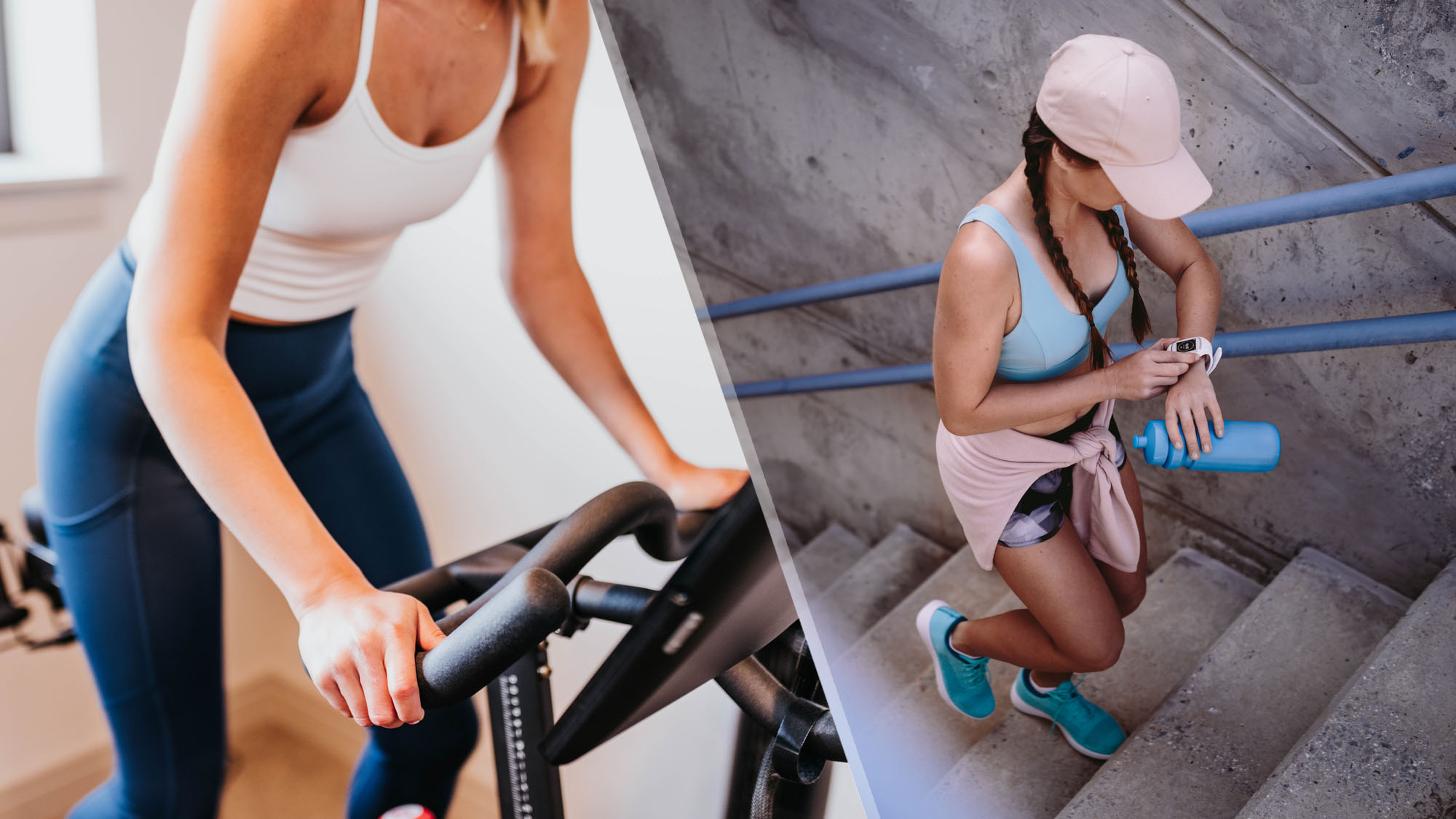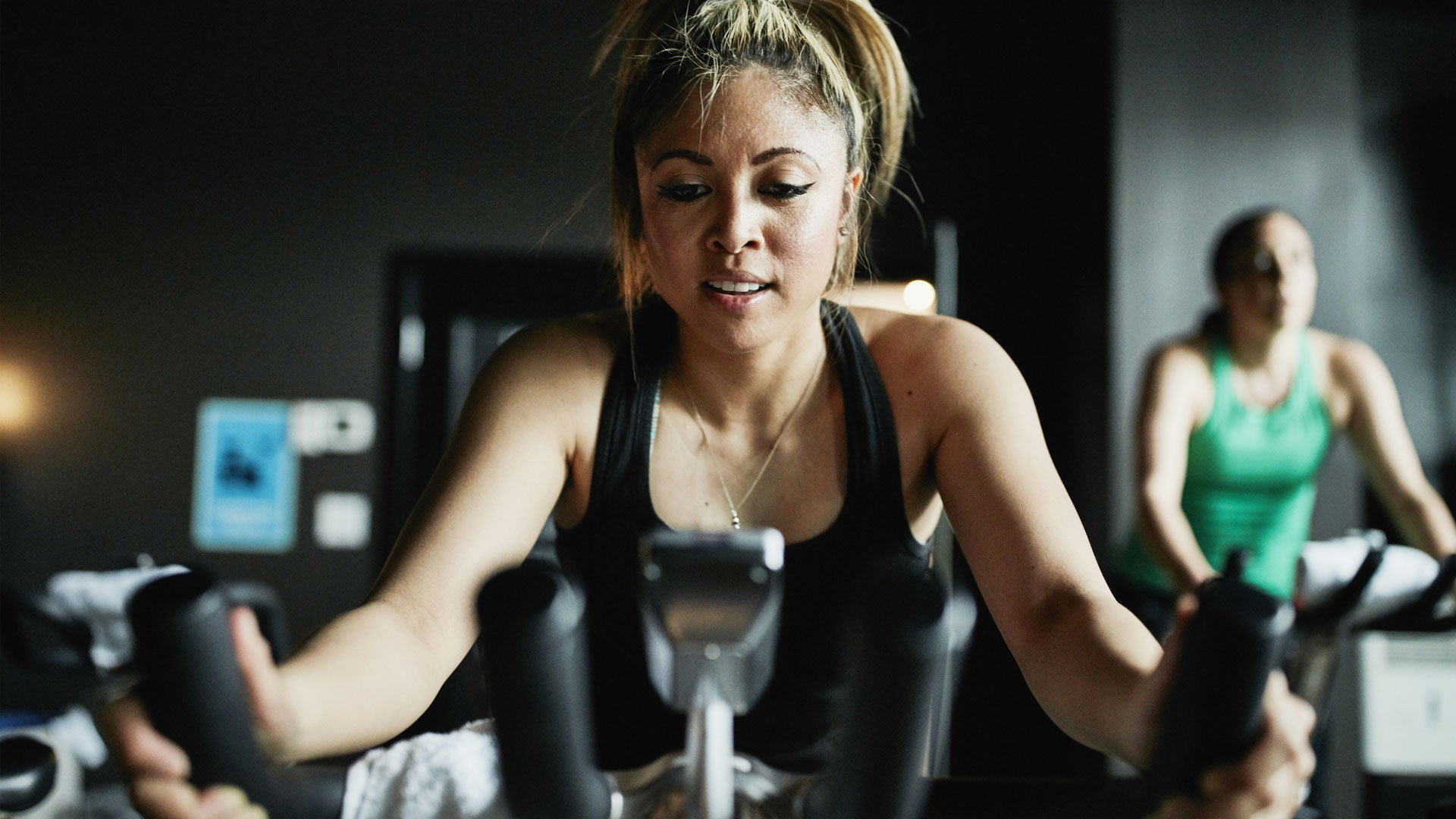Exercise bike vs walking: Which is best?
Both forms of exercise have their benefits, but which one wins?

If you’re stuck deciding which cardio option is best out of the exercise bike vs walking, then let us help you out.
The exercise bike is something that many of us may use at the gym or at a spin class, moving through different resistances, as well as sitting and standing to the beat of the music. Walking is a form of movement that the majority of us will do every day, without thinking, but is also an excellent, free form of exercise, that can be done outside, or indoors on a treadmill.
Cycling on one of the best exercise bikes and walking can both be done with friends or alone, at a pace to suit you. Plus, both are low impact, so they are likely to cause minimal damage (if any) to joints and muscles, and should be suitable for those new to fitness, or returning to fitness following an injury.
But if you’re starting a new exercise regime, which should you focus on? Melissa Dawson is a Personal Trainer and the Nuffield Health Fitness and Wellbeing Advisor. She says that both the exercise bike and walking provide benefits. Below, Melissa delves a little deeper into these two forms of exercise to help you work out which is best for you.
The benefits of using an exercise bike
“The exercise bike is the perfect piece of gym equipment as it helps to tone and strengthen the body, benefits your overall health, and is a great tool for weight loss,” says Melissa. “Whether you’re using an exercise bike as part of a group cycling class or on its own, the different levels of resistance available on the bike allow you to engage all of the main muscle groups, including the glutes, hamstrings, quadriceps, and calves.”
She also adds that the exercise bike is good for working out your abdominal muscles, especially if you think about squeezing your core when cycling on the bike.
“The stationary bike is also a low impact exercise that is gentle on the joints and is very popular for rehabilitation. Not only is it softer on our joints, but it can greatly increase the strength of the muscles without applying large amounts of pressure to them, ideal for knee or ankle injuries,” explains Melissa.
Get instant access to breaking news, the hottest reviews, great deals and helpful tips.
Research has also found that using the exercise bike can help enhance aerobic capacity. When used two to three times a week, participants in the study experienced a rise in their V02 max. V02 max is essentially how much oxygen your body can absorb and use during exercise. The higher your V02 max, the more oxygen your body can consume which also means your body can effectively turn this into more energy!
Is an exercise bike good for weight loss?
Melissa says: “Cycling is a great option for anyone wanting to lose weight, as it can affect both muscle mass and impact our basal metabolic rate (BMR), which increases the number of calories you burn when on the bike, but also after exercise.”
It’s important to remember though that everyone is different and your starting weight will affect the number of calories burned. “However, any type of physical activity, combined with a healthy diet, can help support weight loss goals,” says Melissa.
“When you pedal on a bike for a prolonged period of time, your body is working against resistance which in turn increases how hard you are working, and the rate at which your body burns calories. The more calories you expend, the better chance you have at losing weight,” she adds.
Plus, cycling is a cardiovascular aerobic activity that “has the added benefits of strengthening the heart, lungs and circulatory system due to the increase in heart rate and respiration,” she says.
Added to this, Melissa explains that the exercise bike is also an engaging form of exercise. “It’s very easy to keep the body and mind engaged on an exercise bike, jumping from seated or standing positions, incorporating light or heavier resistances and using different tempos of music. When embarking on a new fitness journey, it’s important to find something you like in order to stick to it.”

Who should avoid using an exercise bike?
There are some people who may not benefit from using an exercise bike. Melissa says that if you suffer from any form of lower back pain, knee pain, hip issues or restricted ankle/joint mobility then a bike might not be the workout for you.
“The set-up of an exercise bike is incredibly important, as it can exacerbate pre-existing ailments or issues. If you are new to any type of exercise, always check with a professional to ensure you are set up correctly.”
Melissa also adds that the bike has been known to cause some people to experience 'Cyclists Knee' — “this is an overuse condition that is caused by the constant friction between the thigh bone and knee cap,” she adds.
Experiencing pain while on the exercise bike? Speak to a fitness professional or seek further advice from a Physiotherapist.
The benefits of walking
Walking is such a natural movement, we often forget that it is in fact also a form of exercise! “Much like cycling, a regular brisk walk has been known to help maintain a healthy weight and help towards weight loss, increase energy levels, improve mood and sleep, strengthen your immune system and reduce stress — amongst many other things,” says Melissa.
She adds: “The further, quicker and more frequently someone walks, the greater the overall benefits. This could mean you may start as an 'average walker' at a relatively normal pace, then gradually work your way up to a faster walk, in turn walking longer distances in shorter amounts of time, similar to a power walk.This can be a great way to improve heart health and increase your body's endurance, all while burning calories.”
Melissa also says that you could even alternate between brisk and leisurely walking, creating intervals, which can help boost cardiovascular fitness and burn a few more calories than you would on a regular walk. Here’s more about how to lose weight and get in shape by walking, plus what 30-minutes of walking a day can do for your body.
Be sure you’re comfortable when walking by wearing a pair of the best shoes for walking (check out the best running shoes, the best hiking boots, and what happened when our fitness editor walked 100 miles in the Skechers Go Walk shoes) and wear clothes that aren’t too restrictive.

Is walking good for weight loss?
Any exercise can help weight loss if it’s part of an overall calorie deficit. With walking being a low-intensity exercise, you might assume that it’s not an effective way to lose weight, however, if your overall daily calorie intake is less than the amount you burn off, you will lose weight. Walking can help to boost this calorie burn.
Research has found that a brisk walk is good for burning visceral fat — the harmful fat that sits within the belly, and around the organs. The same research found that walking for 30 minutes most days of the week is more beneficial than just focusing on diet alone during a 12-week weight loss program.
Melissa says: “Walking can aid weight loss, alongside promoting other health benefits, and is a good starting point for beginners, however, compared to other forms of exercise it’s not necessarily the most effective. Walking is simple which is why it’s such an appealing form of exercise, especially to those looking to burn extra calories or who are new to physical activity, but the number of calories that you burn when walking depends on a number of factors — the main ones being your weight and the speed at which you walk.”
Melissa explains that the average pace when walking is 3 mph, however, the faster you walk, and the more you weigh, the more calories you will burn. “Your body burns fewer calories to perform the same physical activities at a lighter weight than a heavier one. Therefore, as you lose weight, increasing the intensity through upping the pace of your workout, walking with handheld weights, using a weighted vest, or walking on an incline, can help to burn more calories.” Here’s what happened when we tried the viral 12-3-30 walking workout.
Who should avoid walking?
The beauty of walking is that because it’s such a natural movement, everyone can enjoy it. However, if you’re dealing with an injury, you might want to slow the pace and perhaps walk for a shorter distance.
“Anyone suffering from mobility issues, respiratory issues, or pain and discomfort when walking should seek professional medical advice before continuing or increasing the intensity,” warms Melissa.
Exercise bike vs walking: Which is best?
Both the exercise bike and walking have their pros and cons. The exercise bike offers a more intense workout and so, therefore, is likely to be better for weight loss, assuming that you are in an overall calorie deficit. The exercise bike also offers more resistance and so therefore can be better for strengthening muscles.
But on the flip side, there are more injury risks to using the exercise bike. Walking is a natural movement that everyone can incorporate into their everyday lives. It’s low intensity and offers less of an impact on muscles. Plus, walking is something we do every day and is much more of a recreational activity, not to mention that it’s totally free and requires zero equipment! You can even download these apps and get paid to walk.
Both the exercise bike and walking have their place in a healthy lifestyle, however, if calorie burning if your end goal, the exercise bike is likely to be the better option.
Lucy is a freelance health and fitness journalist as well as a pre and post-natal personal trainer. Although a sweaty gym session (skipping rope is a must) is her favorite way to ‘relax’, she’s also a fan of bingeing on The Office, snacking on chocolate-coated raisins, and fizz-filled brunches with friends.

